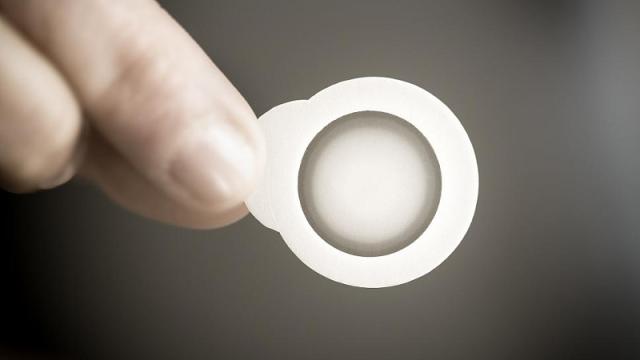A wearable patch used to treat peanut allergies has shown tremendous promise in a recently concluded clinical trial, performing particularly well among young children.
It’s called the Viaskin Peanut Patch, and it administers small amounts of peanut protein through the skin. This might sound dangerous for people with severe peanut allergies, but it works by training the body’s immune system to tolerate small doses of the allergen. A recently concluded one-year clinical trial shows that this patch, developed by DBV Technologies, is effective and safe for children and young adults with peanut allergies, protecting them against accidental ingestion or exposure.
Peanut allergies are on the rise, especially in the West. It’s now estimated that two per cent of all Americans cannot tolerate peanuts, and it has become the leading cause of food-related anaphylaxis and death. In Australia, almost three per cent of children have a peanut allergy. A study from 2015 suggests that most peanut allergies can be staved off by introducing peanuts to children at an early age, upending years of conventional thinking.
An ongoing clinical trial for Viaskin is being conducted by the Consortium of Food Allergy Research (CoFAR), who has partnered with the National Institutes of Health (NIH). Details of the one-year clinical trial were published today at the Journal of Allergy and Clinical Immunology. The patch has not yet been approved by the US Food and Drug administration, but if this trial is of any indication, it’s right on track.
For the study, volunteers with peanut allergies ranging in age from four to 25 were given either a high-dose patch (250 micrograms of peanut protein), a low-dose patch (100 micrograms) or a placebo patch. Each day, the volunteers applied a new patch to their arm or between their shoulder blades. Because the patch is convenient and easy to use, virtually everyone involved in the study was able to use it correctly.
After one year, the volunteers were tested to see if their peanut tolerance had changed, and to what degree. Individuals with the low-dose and high-dose patches experienced similar benefits, with 46 per cent and 48 per cent of volunteers experiencing success (respectively). Encouragingly, children between four and 11 years of age experienced the most improvement; when it comes to strengthening the immune system, the younger the better.
The treatment, called epicutaneous immunotherapy (EPIT), worked just as well as other forms of experimental immunotherapies for allergies, but without needing to rely on oral intake — a form of therapy that’s difficult for about 10 to 15 per cent of children and adults with peanut allergies.
The ongoing clinical trial will continue for another year and a half, after which time the participants will be re-assessed. Looking ahead, the researchers would like to study larger groups of volunteers (the latest study involved just 74 individuals). Should all go well, Viaskin could soon become commercially available.
